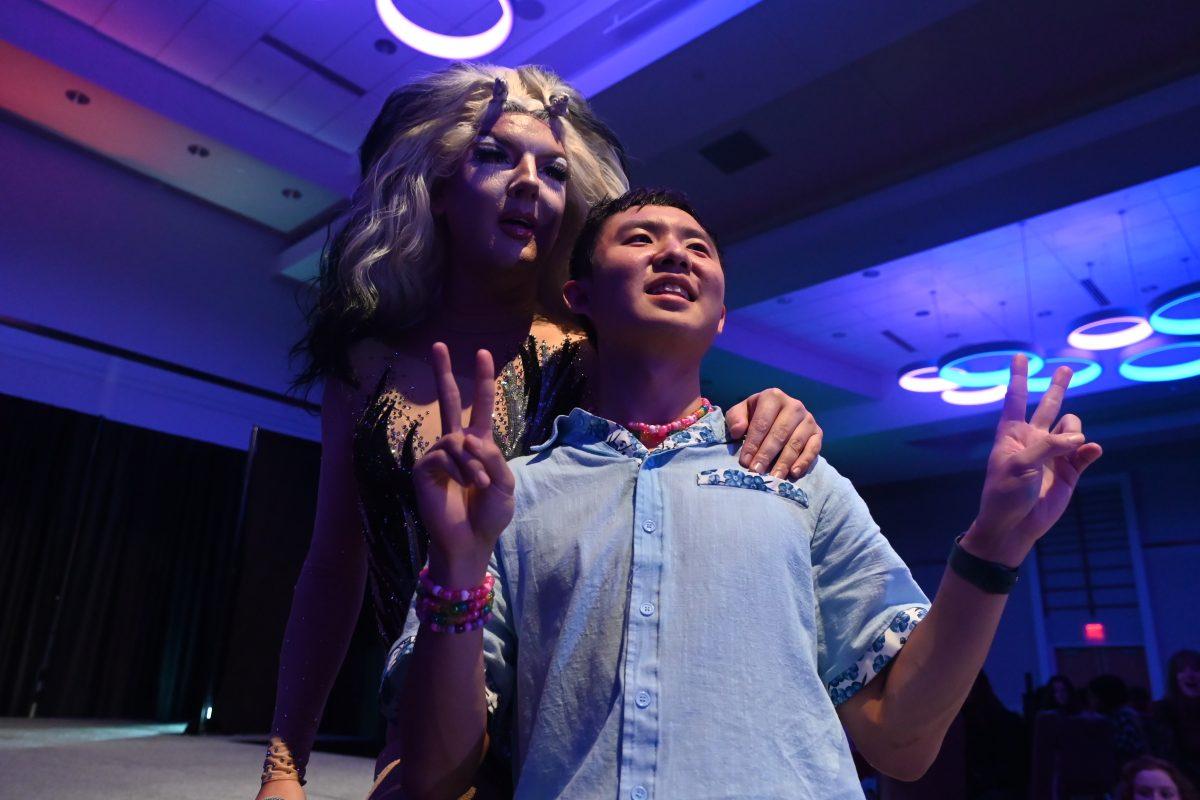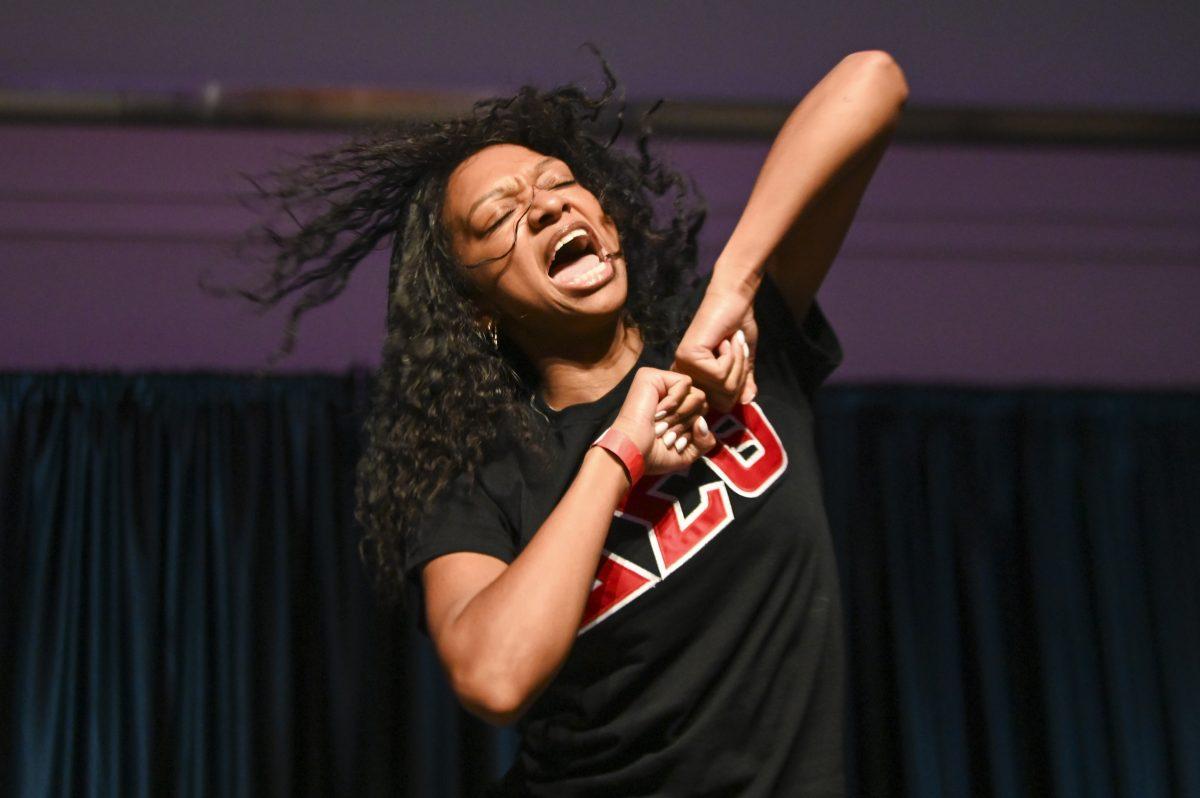That person across the bus could be absolutely incompatible with you, and it wouldn’t matter. With that first glance, all that matters is what your mind and culture tells you is beautiful.
“It’s a big mystery,” Lisa McGraw, assistant professor of biology, said of the origins of attraction.
A highly debated topic, students and researchers discuss what people find attractive—and why.
For Katie Griffin, a freshman in civil engineering, the way someone carries himself is important.
“It’s more so not what they look like, but the way they hold themselves, present themselves,” Griffin said. “And confidence, too. That’s a big thing.”
However, for Amira Alexander, a freshman in nutrition science, and Halima Douglas, a freshman in human biology, masculine men are more attractive.
“Broad shoulders, muscular, tall, thick jaw bone,” Alexander said.
“Facial hair. Not even clean cut. Maybe even, like, shaggy,” Douglas said.
On the other hand, Andrew Hazelwood, a sophomore in mechanical and aerospace engineering, said eyes are most important to him.
“Eyes really draw me in,” Hazlewood said. “A lot of times, for me it is more than just ‘their eyes look good.’ I feel like their eyes kind of reveal a lot more about themselves than a lot of people realize.”
Andrew Taylor, a sophomore in civil engineering, agreed.
“Confidence is a big thing for me,” Taylor said. “You can kind of tell if someone is strong and confident by looking at her eyes. And just like the look on her face.”
Emotion has indeed been shown to be a factor in attractiveness. In a 2011 study by Jessica Tracy and Alec Beall from the University of British Columbia, men rated happiness the most attractive emotion in women. In the same study, women rated pride as the most attractive male trait (and happiness the least attractive).
The brain does have a role in these determinations, Beall said in an e-mail Tuesday, though it is unclear how.
“The medial orbitofrontal cortex ( OFC ), an area of the brain involved in stimulus-reward value, shows increased activation when viewing sexually attractive vs. unattractive faces,” Beall said.
According to McGraw and Amy Parish, a biologist at the University of Southern California, attractive qualities trigger hormonal processes including estrogen and testosterone, which are important in libido, and serotonin and dopamine, which are associated with the reward and addiction pathways of the brain.
However, little definitive evidence exists for what exactly in the brain determines what is attractive to start with.
One of those few definitive biological components is smells and pheromones, according to McGraw.
“Basically, it is inputted into the olfactory bulbs in the brain, and that sends cues to other parts of the brain to release hormones that make you feel good,” McGraw said.
Beyond the established biological element, there are numerous evolutionary theories to attraction in the human quest to perpetuate the species. According to McGraw, one of those is the fluctuating asymmetry theory.
“We are attracted to people who are symmetrical,” McGraw said. “The theory has it that it signifies good health.”
Beall said the female attraction to pride may be because it can be an indicator of status, and thus security, while happiness in females signals youth and sexual receptivity.
“Evolutionarily, men have been programmed to seek out women who will be receptive to their advances,” Beall said, “as well as those who were most able to conceive healthy children. These were typically women who appeared youthful.”
In addition, Parish said women are attracted to a major histocompatibility ( MHC ), a smelled but unnoticed aspect of the immune system, that is different than their own.
“By having this preference, the offspring she would create with that man would have a wider range of immunity to pathogens than if she mated with someone whose MHC is more similar to her own,” Parish.
Sinikka Elliott, assistant professor of sociology and anthropology, is critical of evolutional theory and much biological research because of the assumptions they make.
“[Evolutionary theory] assumes heterosexuality and posits male sexuality as active, versus female sexual passivity,” Elliott said.
Social and cultural factors surfaced in Parish’s 2007 study of attraction preferences in the Western world. While the Western world showed a preference for lighter female skin, “hour-glass” female figures and muscular men; similar studies by the team in Africa and China gave different results.
Elliott said that in many ways attraction is socialized.
“Ideas about what is and is not attractive are related to culture,” Elliott said, “and culture is related to larger processes in society, like industrialization, urbanization [and] gender inequality.”
For example, in past centuries the heavier Western woman was more attractive.
“As food became plentiful, overweight no longer carried the same symbolic meaning,” Elliott said. “It no longer meant that someone was wealthy and could therefore afford to eat lots. So the standards for attractiveness changed.”
On the other hand, Alexander believed her male preferences came from a socialized desire for security.
“Being a female in this society has conditioned me to want the complete opposite of me. Not that I am meek, not that I’m weak, or not that I’m smaller—but I am. The man is always portrayed as bigger, broader and dominant,” she said. “So I guess I am looking for security even though I may not want that in a relationship.”
Sometimes cultural fluctuations have extremes. Caleb Hansen, a sophomore in mechanical engineering who grew up in China, said the Chinese consider the narrow face less beautiful than the round face.
“I knew Chinese parents who would have their kids always lie on the back of their head and not put their head sideways on their pillow,” he said. “They were afraid that gravity might push their head to be more narrow if they put their head sideways on the pillow at night or something like that.”
Furthermore, in Mauritania, a small Muslim country in West Africa, obesity has been historically considered attractive for females. Parents will force-feed their daughters to marry them well, according to Consultancy Africa Intelligence.
The “science of attraction” continues to be researched heavily. Parish summarized the debate.
”Attraction is biological and cultural” Parish said, “personal and systemic, mediated from individual choice and preference, family influence and pressure, societal expectation and requirement, and our evolutionary history as a mammal, a primate and then a human being.”
In other words: it’s complicated.







